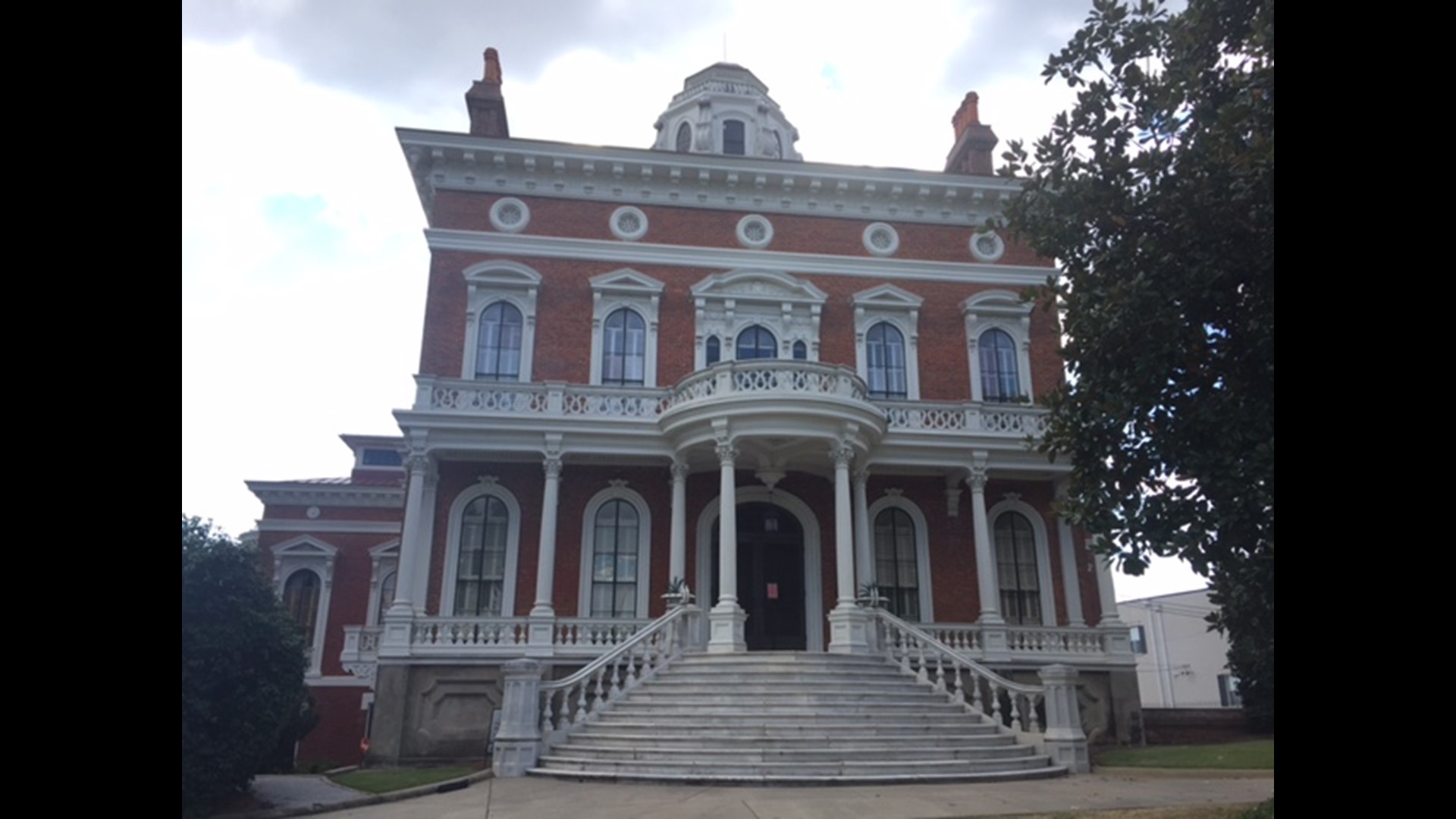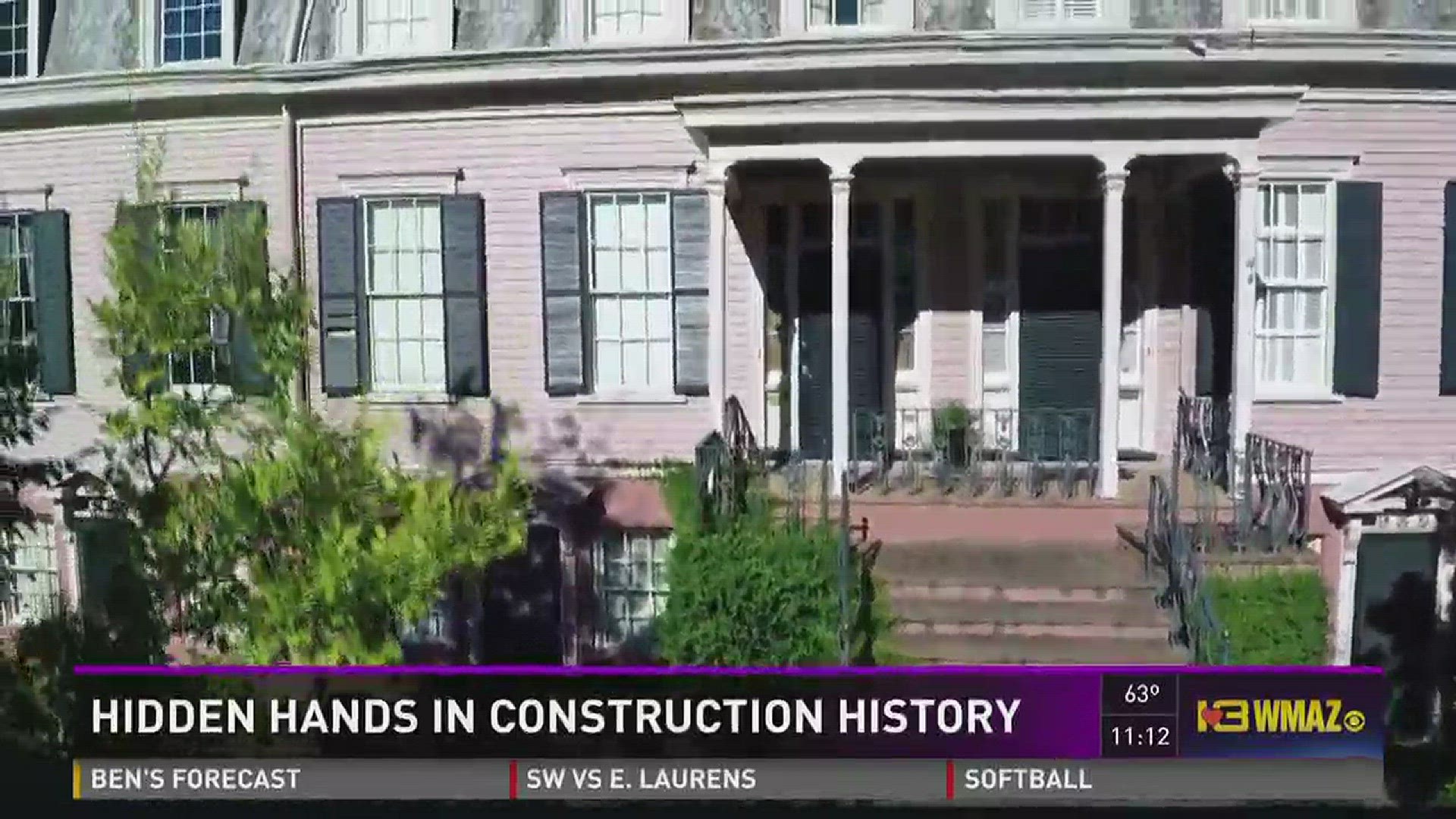Hidden History: The Construction of Historic Macon Homes
<p>It can be proven through extensive research that slaves had a helping hand in the spectacular antebellum homes and national landmarks throughout Central Georgia.</p>

It can be proven through extensive research that slaves had a helping hand in the spectacular antebellum homes and national landmarks throughout Central Georgia.
Slaves, emancipated over 150 years ago, are most remembered for labor in agriculture, like picking cotton. But slave labor was used for more than that.
Professor Matt Harper at Mercer University, and expert on African American studies says “slaves were involved in labor in practically every enterprise throughout the south”. Harper believes that the lengths that slaves went "to perfect their skills to study to become beautiful craftsman... to fight for ways to elevate themselves even with a degrading system, it's heroic".
The Hay House
The Hay House has been standing almost 160 years. Through documentation, it is said that James B. Ayers was the local supervisor for construction of Hay House.
But another worker is not mentioned often enough. Primus Moore worked for Ayers on a majority of his construction projects, including the Hay House. Moore did all of the plaster work on Macon City Hall, as well.
Primus Moore, was a slave.
Jonathan Poston is the Director at the Hay House. He says, “they would have definitely at least put together the ceilings. A lot of those elements were cast plaster”. Poston says the Hay House is still researching who build the Macon Mansion. They are still looking for what Poston calls the “ultimate document”.
Poston says he knows the owner of the Hay House, William Johnston, and James B. Ayers were friends. He says Ayers has “two master craftsman working for him. And Ben Jackson and Primus Moore, although enslaved, were master carpenters and plasters”. Ben Jackson was another slave belonging to Ayers.
Poston says, “here in all of these rooms, you see these amazing plaster and wood work and we’d like to think their skills hands played a definite role in the construction of the house”.

The Hay House became a National Historic Landmark in 1974. In its application to join the National Register of Historic Places, it is stated that a local architect, James B. Ayers was the supervisor of construction on the building.
Extensive research has been done on James B. Ayers by Nathan Corbitt, a Mercer Law Student. Corbitt says that Ayers was “a local builder who had a building crew composed of slave artisans”.
In addition, the application states that all of the bricks used in the construction of the Hay House were built on a nearby plantation, Johnston Plantation, property of the owner of the Hay House. The 1860 Slave Census shows that Johnston owned slaves on the plantation. It is likely all the bricks of the Hay House were built by those slaves.
Macon City Hall
The building that would become Macon City Hall has been standing for over 180 years. Primus Moore was one of the slaves who completed all of the plaster work on Macon City Hall.
It is through the research of Nathan Corbitt that we can confirm this. Corbitt is a Mercer University Law Student who has done extensive research on slaves over the past three years.
Primus Moore is one slave that Corbitt was able to find the most documentation. Moore completed all the plaster work on Macon City Hall, on an annual basis. Even after emancipation, he was paid to continue doing the work on City Hall. Corbitt says it may have been the "first government contract possibly, in Macon, being awarded to a minority”.

Primus Moore
Once Primus Moore was emancipated, he went on to start his own construction business and even build his own home. The building he called home still stands today in Macon.
Moore also helped build The Slate Row Houses, a popular historic housing complex in Macon. These homes were used as housing for the engineers that built the Hay House.

Historic Slate Row houses in Macon - Spherical Image - RICOH THETA
360 photo/Macon's Historic Slate Row house - Spherical Image - RICOH THETA
Historic Slate Row house in Macon - 360 - Spherical Image - RICOH THETA
The entrance: Macon's historic Slate Row house - Spherical Image - RICOH THETA
360 Photo: Macon's historic Hay House - Spherical Image - RICOH THETA
Historic Hay House; Macon, Ga. 360 - Spherical Image - RICOH THETA
360 Photo: Foyer of Macon's Historic Hay House - Spherical Image - RICOH THETA
Hay House, Macon, Ga. 360 photo - Spherical Image - RICOH THETA


